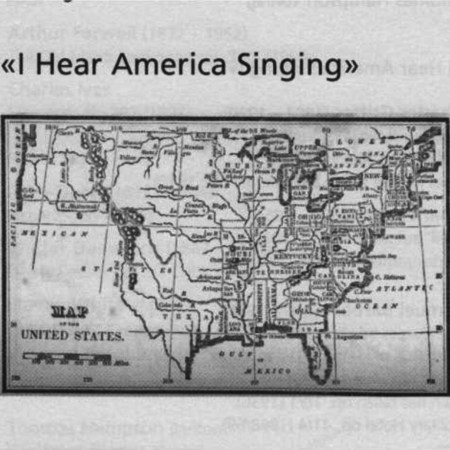An Essay by Thomas Hampson, Renate Stark-Voit, and Carla Maria Verdino-Süllwold
From the liner notes of Schumann: Heine Lieder
Schumann also drew the Liederkreis, Op. 24, poems from Heine’s Buch der Lieder, and both musically and dramatically they foreshadow the 20 Lieder composed later that year. Schumann dedicated the nine songs to Pauline Viardot and sent a copy to Heine, himself, though he received no reply from the poet and it is not known whether Heine actually received them.
Like the 20 Lieder, the Liederkreis employs Heine’s metaphorical language of journeys, circles, integrated personal relationships as well as respect for and manipulation of nature and natural forces to illuminate the personal paradox called Life. The collection of nine songs begins with a waking lover (Morgens steh’ ich auf und frage) who each day wonders if his beloved will come and each evening lies sleepless dreaming of the wanderings of his empty days. The melancholy reverie of the first song modulates into the impatient rage of Es treibt mich hin and then relents into the more lyrical Ich wandelte unter den Bäumen, where the poet wanders into the woods and talks with the birds, whose song reminds him all too poignantly of his beloved. As in Und wüßten’s die Blumen (from the 20 Lieder), Nature empathizes with the poet, but he persists in his melancholy. In the starkly affecting setting of the next song, Lieb’ Liebchen, leg’s Händchen, the piano sounds the hammer of coffin nails, as the poet confronts a vision of his own death. From this yearning for the wanderer’s ultimate rest, the fifth song, Schöne Wiege meiner Leiden, recounts the poet’s bitter farewell to his home and his love as he sets out from the port city on a lonely journey that intensifies in anger and sarcasm in Warte, warte, wilder Schiffmann before subsiding into the more ironic, but still bitter calm of the river journey in Berg, und Burgen. Like the Rhine in the 20 Lieder and Heine’s Lorelei, the waters hold a double-edged truth, their calm surface reminding of the beloved’s gentle smile, their depths beckoning with oblivion. This folk-like reverie is followed by a short outburst of quiet pain, Anfangs wollt’ ich fast verzagen, before the sequence concludes with Mit Myrthen und Rosen. Like the twentieth song of the larger cycle, the poet buries his compositions; this time, instead of sinking them in the Rhine, he enshrines them in a gilded book, adorned with myrtles and roses, and dreams of the day when this book of songs will find its way across the distance and into the heart of his beloved. With Beethoven’s An die ferne Geliebte as its model, Op. 24 ends on a conciliatory note.
Not so with the three-song sequence from Romanzen und Balladen, Op. 53. Der arme Peter is a fiercely ironic triptych about an unhappy lover who flees the wedding of his beloved (Der Hans und Grete tanzen herum), resolving to go to the mountains in search of solace (In meiner Brust, da sitzt ein Weh). Realizing that he cannot assuage his weeping and mocked by the whispers of the townsfolk in Der arme Peter wankt vorbei, poor Peter departs in search of his grave, which the poet-narrator says is the best place to rest from pain.
In these Heine settings, as in the 20 Lieder und Gesänge, Schumann demonstrates his sensitivity to the poet’s method: Heine’s skillful use of the old Romantic iconography, subtly interlaced and ultimately undercut by a self-ironic awareness. Schumann’s songs capture that irony which the composer remembered so vividly flickering across the lips of the poet he had met.
File Download
An Essay by Thomas Hampson,
Renate Stark-Voit, and Carla Maria Verdino-Süllwold
Schumann: Heine Lieder
Thomas Hampson, baritone
Wolfgang Sawallisch, piano
EMI Classics: CDC55598


